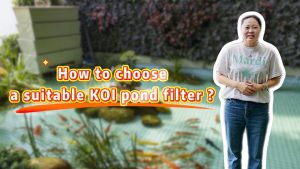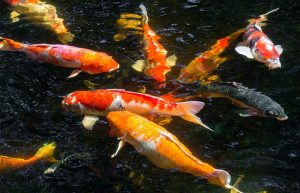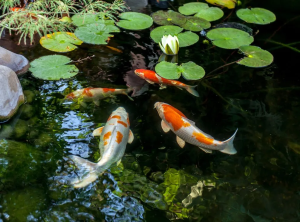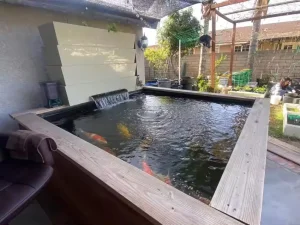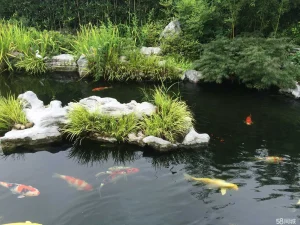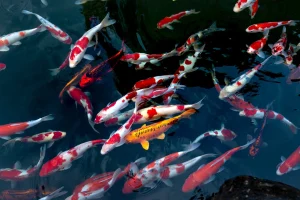What is RAS Aquaculture?
Aquaculture is an innovative industry – it won’t stand still for long. Traditionally, fish farming has been done in ponds or sea cages – in fact, the practice dates back thousands of years.
This is still the case on the vast majority of farms today – sometimes referred to as net fences or semi-closed farming systems. But as the aquaculture industry has expanded rapidly over the past few decades, providing more than half of global seafood consumption, it has also frequently innovated and introduced new practices. One of these is the introduction of closed systems – often called RAS, which stands for circular aquaculture systems.

RAS Aquaculture Case Study
Today, we are going to introduce one of our customer cases. A small indoor grass carp farming system with 15 tons of water was built using our QL-10 integrated aquaculture machine. To ensure good water purification, recirculating systems consist of a number of components with specific functions.See detailed explanation on RAS technology below.
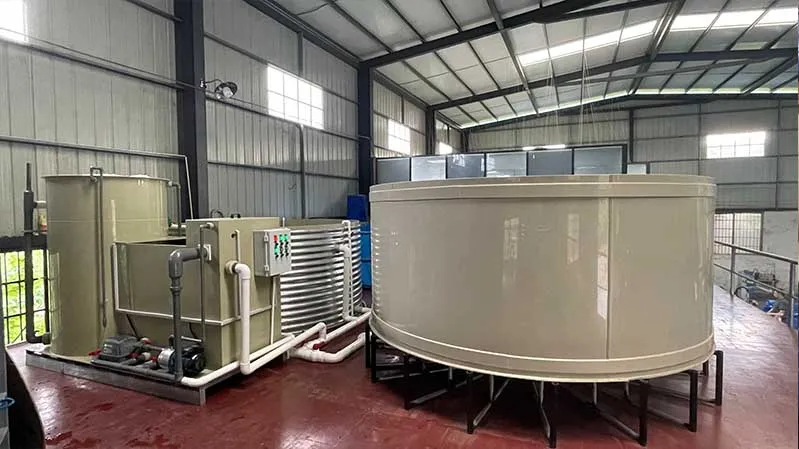
MECHANICAL FILTER
In a RAS system the mechanical filter is used to remove the suspended solids from the system water flow. These solids, primarily faecal matter, need to be removed in order to maintain water quality. Depending on the situation we either choose for drumfilter.
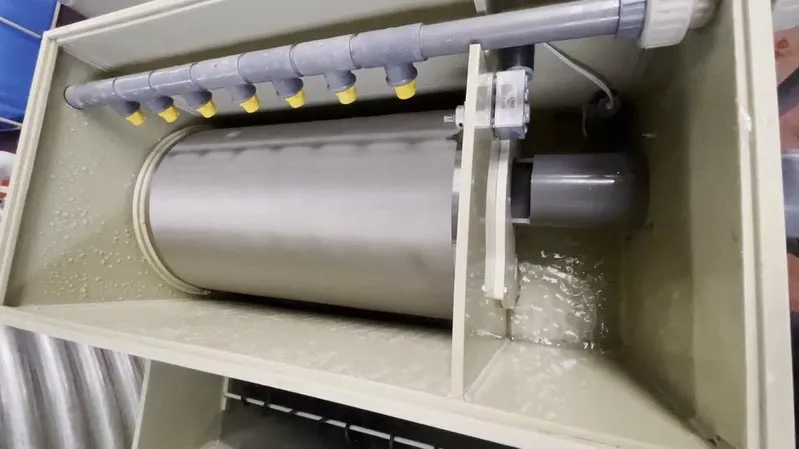
The system water coming from the fish tanks can also be mechanically cleaned using a drumfilter. Suspended solids are continuously and automatically removed from the system water and therefore the drumfilter requires no daily maintenance. The downside of a drumfilter is the continuously need of electricity. The system water flow from the fish tanks in the drumfilter. In the drumfilter the system water passes the filter screen. In this process, the particles in the system water are blocked by the filter screen. Due to the clogging of the filter screen the water level inside the drum will rise. As a result, the flushing mechanism is put into operation. The drum starts to rotate, and from the outside of the drum water is sprayed under high pressure from nozzles through the filter cloth, hereby flushing the waste particles from the screen. Together with the waste particles the water is discarded in the gutter. Different filter screens can be chosen depending on fish species and fish size.
UV LIGHT
This light is electromagnetic radiation just below the visible light spectrum. The wavelength of UV light is 200-280 nanometers.
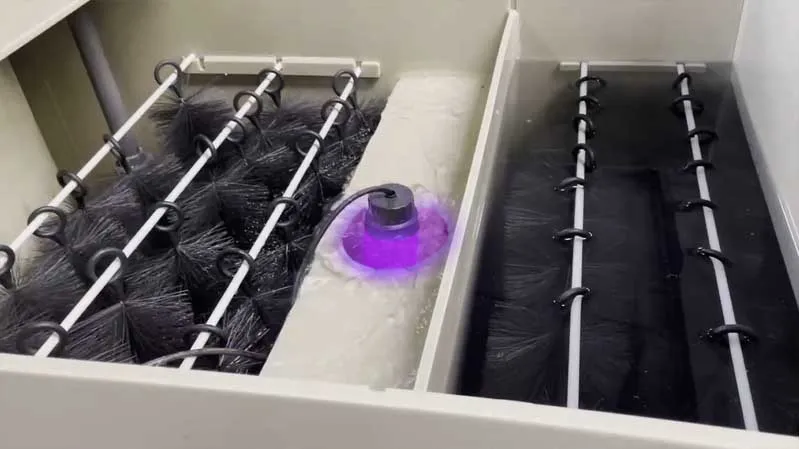
UV light is highly germicidal and has an antiseptic effect. With the use of irradiation of UV light to a contaminated surface, or in running water, it is possible to control excessive growth of micro-organisms including bacteria. UV disinfection is a proven method to kill off bacteria, viruses and fungi, but first and foremost to keep the system water clear and free of small particles even at low dosage.
BIOLOGICAL FILTER
NH4 or ammonium is produced by the fish during digestion of the feed. It is a waste product of protein digestion. The ammonium is toxic for fish. Ammonium (NH4) however is used by certain bacteria for energy production. These bacteria are present in the biotower of a recirculation system and transfer NH4 into nitrite, NO2, in an aerobe environment. Like ammonium, nitrite is toxic for fish at high levels, but will cause problems at lower concentrations already. Nitrite is also used as an energy source for certain bacteria in the biological filter. These bacteria transfer nitrite in the relatively harmless nitrate (NO3). In a recirculating aquaculture system there are parts created where these bacteria can grow in optimal conditions. Like the biotower and moving bed filter (also known as upflow filter).
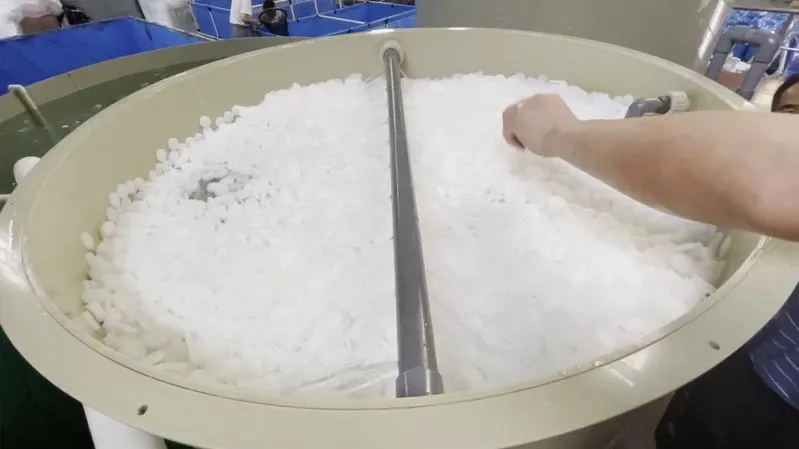
Another biological filter is the moving bed filter. These filters have a high filter capacity with low volume. The moving bed filter consists of a tank with aeration device and is filled with filter media (K5 meida). A biofilm of nitrifying bacteria grows on the surface of the media.
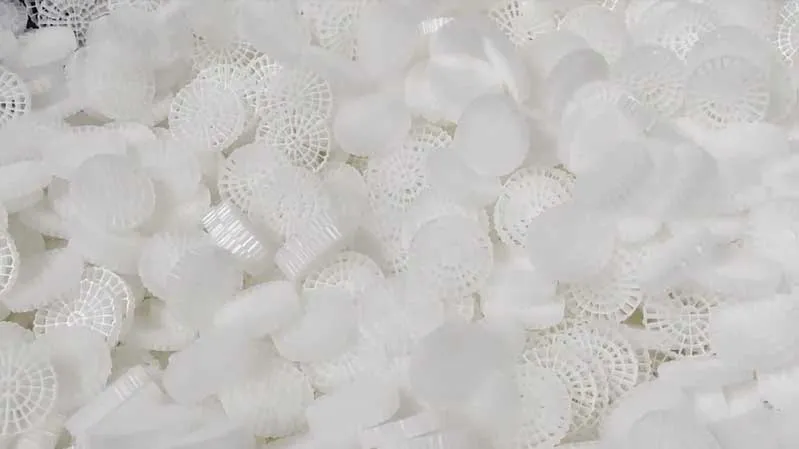
ADVANTAGES OF RECIRCULATING AQUACULTURE SYSTEM
The advantages of farming in RAS are:
- Fully controlled environment for the fish
- Low water use
- Efficient energy use
- Efficient land use
- Optimal feeding strategy
- Easy grading and harvesting of fish
- Full disease control

